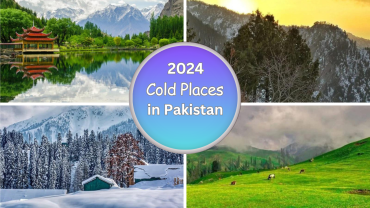Gilgit Baltistan uncovers an adventure that would blow the mind of any average person, where the rough landscapes have been quiet observers to the walk of domains, the spread of religions, and the conjunction of different societies. Settled in the northernmost scopes of Pakistan, Gilgit Baltistan is a district where history and grand scenes unite, offering a story as spellbinding as the transcending tops that watchman its mysteries.
The Beginning of Civilization in Gilgit Baltistan
The historical backdrop of Gilgit Baltistan extends back to vestige, with archeological proof proposing that this region was occupied by human developments more than millennia prior. The essential area of Gilgit Baltistan, filling in as a junction between the subcontinent, Focal Asia, and China, made it a vital intersection on the old Silk Street. This worked with exchange as well as the trading of thoughts, convictions, and advances, enhancing the social embroidery of the area.
The Realms of Gilgit Baltistan
In the early hundreds of years, Gilgit Baltistan was a mosaic of little realms and territories, each with its own ruler and a level of independence. Among these, the Realm of Gilgit was one of the most unmistakable, known for its tactical ability and key collusions. These realms assumed a urgent part in the transmission of Buddhism across Asia, as proven by the various stupas and rock carvings tracked down all through the district.
The Appearance of Buddhism
The presentation of Buddhism in Gilgit Baltistan denoted a huge section in the locale’s set of experiences. It is accepted that Buddhism was presented here around the second century CE, thriving during the fourth to eighth hundreds of years. The leftovers of Buddhist cloisters, stupas, and rock carvings in places like Kargah Valley bear declaration to the boundless impact of Buddhism. This period was portrayed by noteworthy accomplishments in workmanship, culture, and learning, with Gilgit Baltistan turning into a center point for researchers and priests.
The Islamic Impact
The appearance of Islam in Gilgit Baltistan in the fourteenth century introduced another time. The transformation to Islam was progressive and quiet, drove by Sufi ministers who traversed the district. The Islamic period was set apart by the development of mosques and madrasas, with the Persian impact becoming clear in the nearby engineering and language. The locale’s essential significance proceeded, with Gilgit Baltistan filling in as a passage for the spread of Islam into Focal Asia.
The Incomparable Game and English Impact
The nineteenth century saw Gilgit Baltistan become a performance center for the international competition between the English Realm and Tsarist Russia, known as the Incomparable Game. The English laid out the Gilgit Organization in 1889 to counter Russian advances towards the Indian subcontinent. This period was set apart by political interests, undercover work, and military endeavors, with Gilgit Baltistan assuming a basic part in the safeguard techniques of the English Realm in South Asia.
The Creation of Present day Gilgit Baltistan
The mid-twentieth century was a defining moment throughout the entire existence of Gilgit Baltistan. In 1947, with the parcel of English India, individuals of Gilgit Baltistan assumed an essential part in deciding their future. The neighborhood people, drove by the Gilgit Scouts, pronounced autonomy from the Maharaja of Kashmir and decided to join Pakistan. This occasion reshaped the area’s political scene, coordinating Gilgit Baltistan into the recently framed territory of Pakistan.
The Socio-Social Development
Notwithstanding the political disturbances, the socio-social texture of Gilgit Baltistan has stayed dynamic and various. The locale is home to a large number of ethnic gatherings, including the Shina, Balti, Wakhi, and Khowar, each with its own language, customs, and customs. This variety is praised through different celebrations, music, and dance, which keep on flourishing close by current turns of events.
Protecting the Legacy
Today, the test lies in protecting the rich legacy of Gilgit Baltistan despite quick modernization and natural changes. Endeavors are in progress by both administrative and non-legislative associations to moderate the authentic locales and advance maintainable the travel industry, guaranteeing that the tradition of Gilgit Baltistan’s celebrated past keeps on motivating people in the future.
Gilgit Baltistan climate/Climate Gilgit Baltistan
Gilgit-Baltistan, settled in the midst of the transcending pinnacles of the Karakoram, Himalayas, and Hindukush ranges, encounters a different environment that changes significantly relying upon the height. The locale partakes in an exceptional weather condition, with fresh, clear summers that give a welcome rest from the intensity experienced in quite a bit of South Asia. During these months, temperatures in Gilgit-Baltistan are agreeably gentle, making it an optimal time for traveling, mountaineering, and investigating the shocking regular magnificence.
Winters in Gilgit-Baltistan are an alternate story, transforming the scene into a hypnotizing winter wonderland, but with freezing temperatures that can fall well beneath freezing. Snow covers the mountains, valleys, and towns, making postcard-amazing scenes yet in addition making a few regions distant. Regardless of the chill, the cold weather months offer their own appeal, with open doors for winter sports and the opportunity to observe the peaceful magnificence of snow-covered tops under the unmistakable blue skies.
Capital of Gilgit Baltistan
The capital of Gilgit-Baltistan, Gilgit, fills in as the district’s authoritative and social heart, settled in the midst of the emotional scenery of the Karakoram and Himalayan mountain ranges. This clamoring town isn’t just a center point for explorers wandering into the northern domains of Pakistan yet in addition a mixture of different societies, dialects, and customs. Gilgit’s essential area has generally made it a huge stop on the old Silk Street, working with exchange and social trades between the East and the West.
Today, Gilgit is a lively city that mixes innovation with custom, offering guests a brief look into the remarkable legacy of Gilgit-Baltistan. From its exuberant markets loaded up with neighborhood painstaking work to the quiet magnificence of its waterways and encompassing scenes, Gilgit enamors the hearts of all who visit. The city likewise fills in as a passage to a portion of the world’s most glorious mountains, glacial masses, and lakes, making it a fundamental beginning stage for investigations into the stunning normal marvels of Gilgit-Baltistan.
Boss Priest of Gilgit Baltistan
The place of Boss Priest in Gilgit-Baltistan holds huge significance, as it is the most elevated leader office inside the area. The Central Priest is answerable for driving the commonplace government, settling on critical choices with respect to administration, advancement, and organization in Gilgit-Baltistan. This job includes the execution of strategy as well as the portrayal of Gilgit-Baltistan’s inclinations at both public and worldwide levels, guaranteeing the locale’s interesting necessities and difficulties are tended to.
The Central Pastor’s authority is critical in exploring the financial improvement of Gilgit-Baltistan, zeroing in on further developing foundation, schooling, medical care, and the travel industry, which are vital to the district’s success. Given Gilgit-Baltistan’s essential area and rich social legacy, the Main Pastor assumes a urgent part in advancing and safeguarding the locale’s regular magnificence and social legacy, making it a sought after objective for vacationers from around the globe.
Legislative leader of Gilgit Baltistan
The Legislative leader of Gilgit-Baltistan assumes a critical part in the administration and regulatory structure of this decisively huge district in Pakistan. As the stately head, the Lead representative’s liabilities incorporate managing the execution of bureaucratic arrangements, guaranteeing the solidness and respectability of the common government, and addressing Gilgit-Baltistan in public undertakings. This position represents the solidarity and the bureaucratic oversight inside the district, going about as an extension between the neighborhood government and the focal legislature of Pakistan.
Notwithstanding these obligations, the Legislative head of Gilgit-Baltistan is instrumental in cultivating improvement extends that expect to upgrade the financial scene of the locale. From elevating the travel industry to protecting the rich social legacy and regular magnificence of Gilgit-Baltistan, the Lead representative’s impact is essential in controlling the locale towards economical development and success. The job, consequently, requires a visionary chief who can offset customary qualities with the requirement for modernization and improvement, guaranteeing the prosperity and progress of individuals of Gilgit-Baltistan.
Conclusion
The historical backdrop of Gilgit Baltistan is a demonstration of the flexibility and versatility of its kin, who have explored the flows of time to save their remarkable character. From the old Silk Street to the cutting edge hallways of force, Gilgit Baltistan has stayed a place that is known for unmatched excellence and verifiable importance. As we dive into its past, we uncover the layers of human civilization as well as gain bits of knowledge into the powers that shape our present reality.





Comment (0)